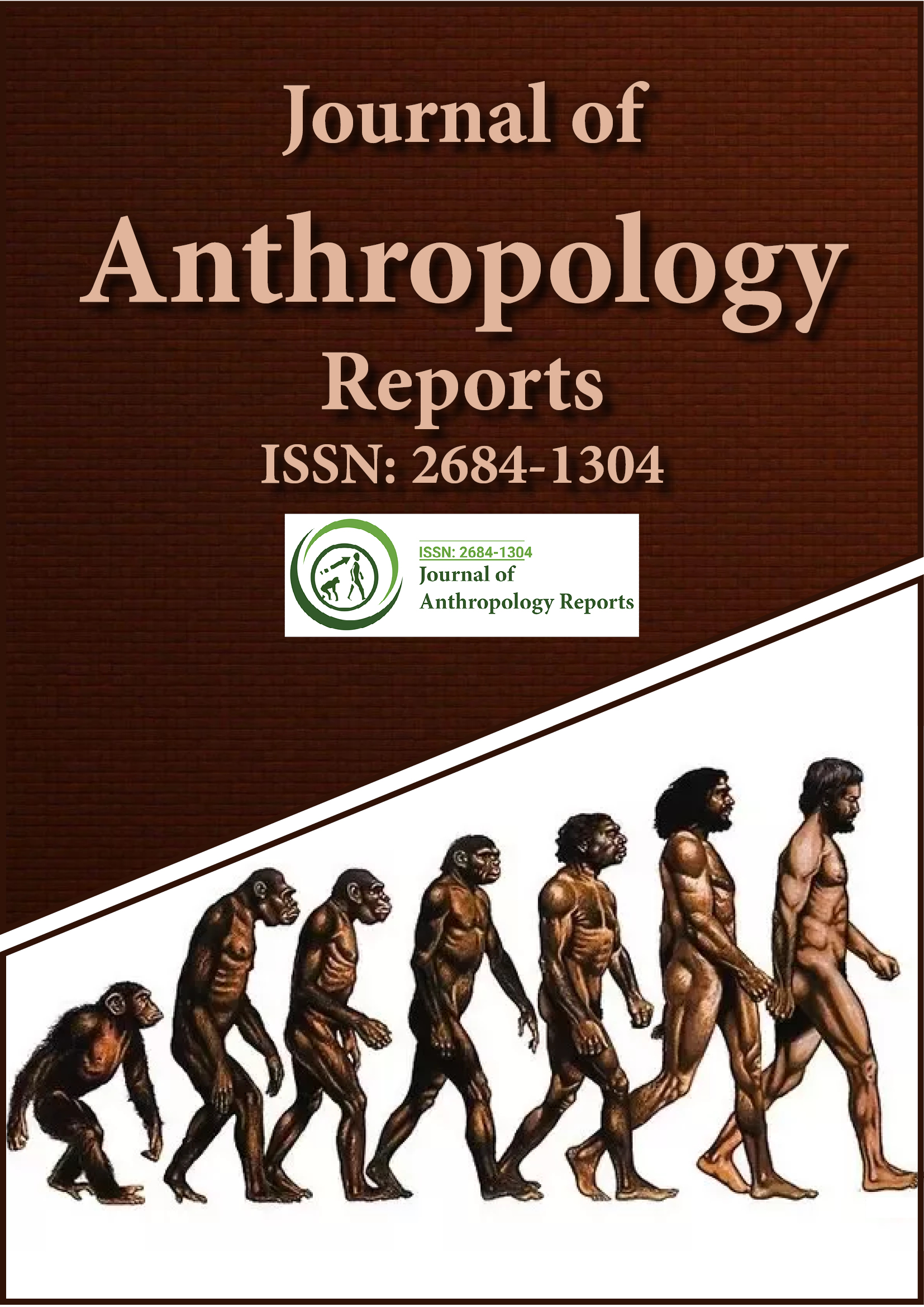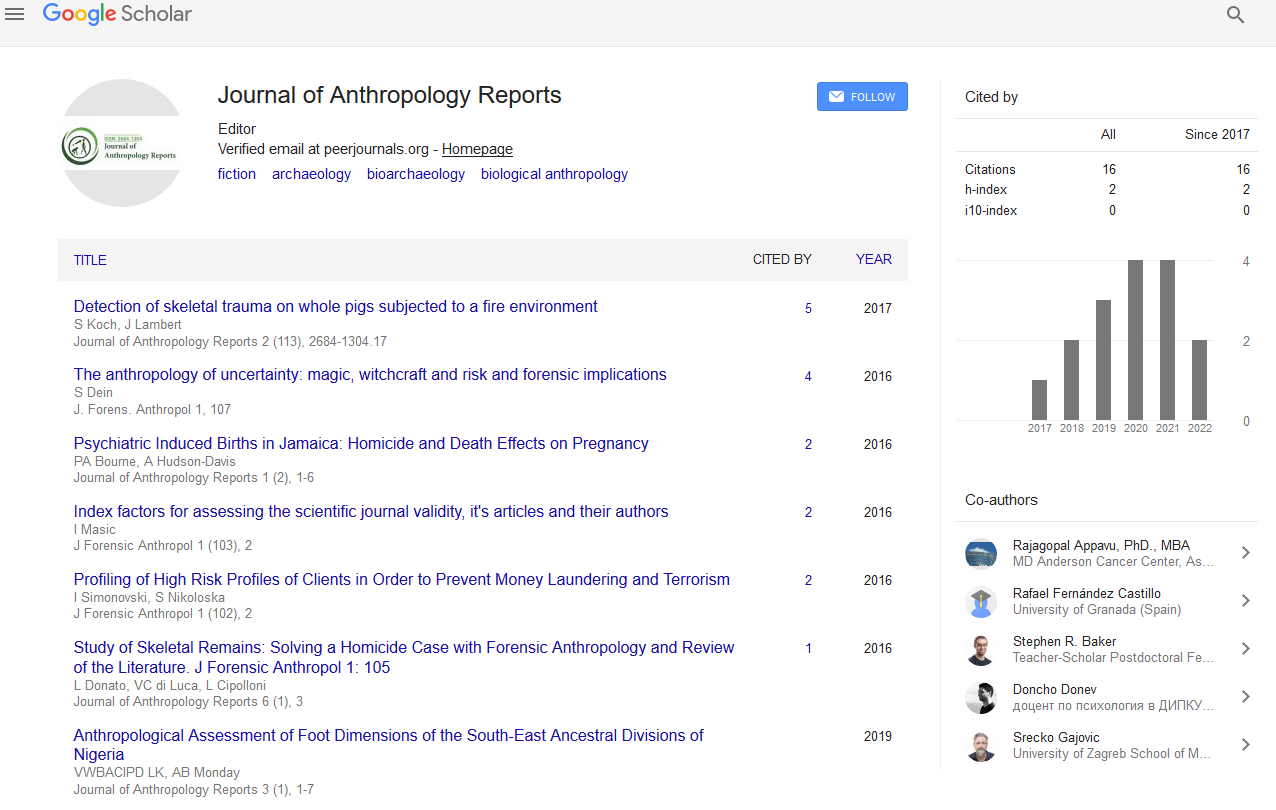Indexed In
- RefSeek
- Hamdard University
- EBSCO A-Z
Useful Links
Share This Page
Journal Flyer

Open Access Journals
- Agri and Aquaculture
- Biochemistry
- Bioinformatics & Systems Biology
- Business & Management
- Chemistry
- Clinical Sciences
- Engineering
- Food & Nutrition
- General Science
- Genetics & Molecular Biology
- Immunology & Microbiology
- Medical Sciences
- Neuroscience & Psychology
- Nursing & Health Care
- Pharmaceutical Sciences
Short Communication - (2024) Volume 7, Issue 4
Balancing Heritage and Change: Cultural Preservation in Diaspora Communities Through Demic Migration
Oliver Pierce*Received: 29-Nov-2024, Manuscript No. JFA-24-28387; Editor assigned: 02-Dec-2024, Pre QC No. JFA-24-28387 (PQ); Reviewed: 16-Dec-2024, QC No. JFA-24-28387; Revised: 23-Dec-2024, Manuscript No. JFA-24-28387 (R); Published: 30-Dec-2024, DOI: 10.35248/2684-1304.24.7.211
Description
The study of culture in relation to migration is essential for understanding the dynamics of cultural preservation and transformation. The forces of demic migration-where entire communities or population groups move and establish new settlements have long been an important factor in forming cultural identities, practices and social structures. These migrations, whether driven by economic, political, or environmental factors, contribute to the loss and conservation of culture complex ways [1]. As new diaspora communities emerge from these migrations, they navigate a delicate balance between preserving their heritage and adapting to the host culture. This dual process of cultural loss and conservation is increasingly relevant in today’s globalized world, where mobility and interconnectedness are reshaping societies at unprecedented rates [2].
Demic migration, which involves large-scale population movements, often leads to the formation of diaspora communities that maintain distinct cultural identities while integrating into new social and economic environments. One of the core dynamics of these migrations is the negotiation between the continuity of ancestral traditions and the adaptation to a new cultural region [3,4]. For example, diasporic groups often retain elements of language, religion, cuisine and family structure, passing them down across generations. These practices act as cultural anchors, preserving a sense of continuity despite geographical separation from the homeland. Yet, alongside the retention of certain cultural markers, diaspora communities must adapt to their host society, either voluntarily or due to external pressures. This adaptation can lead to the transformation or even the loss of specific cultural practices, especially when these elements are no longer viable in the new environment [5,6].
The process of cultural loss and conservation through demic migration is further influenced by the generational shifts within diaspora communities. First-generation migrants often hold more strongly to their original culture, replicating familiar practices and seeking to create a sense of home in the foreign land. However, as subsequent generations are born into the diaspora, they may find themselves less connected to the homeland culture. These younger generations often face a dilemma, navigating between the cultural expectations of their families and the pressures to integrate into the broader society. Over time, this can result in a mixing or even the dilution of cultural practices, where the second or third generations adopt hybrid identities that incorporate elements from both their ancestral culture and the host society’s culture [7,8].
A critical factor in the conservation of culture in diaspora communities is the role of social institutions such as schools, religious organizations and cultural centers. These institutions play a significant role in promoting cultural transmission across generations. Schools may offer language classes, religious institutions provide spiritual guidance and cultural centers host events that celebrate traditional customs. Through these spaces, members of the diaspora can stay connected to their roots, reinforcing cultural identity and community cohesion. Moreover, new forms of cultural expression often emerge within these communities, creating a unique hybrid culture that reflects both the homeland’s traditions and the realities of living in the diaspora. This dynamic can be seen in areas like music, dance and art, where cultural fusion leads to the creation of new genres and styles that resonate with the younger generation while still maintaining links to their cultural heritage [9,10].
In conclusion, the dynamics of cultural loss and conservation in diaspora communities are complex and multifaceted. Demic migration serves as a powerful force in shaping how cultures evolve and adapt to new environments. While some aspects of culture may be lost over time due to generational shifts or integration pressures, the resilience of many diaspora communities lies in their ability to retain core elements of their heritage while also embracing change. The ongoing negotiation between cultural preservation and adaptation is central to the experience of diaspora communities, which continue to contribute to the rich tapestry of global culture. Through institutions, generational continuity and new forms of cultural expression, these communities play an important role in ensuring that cultural legacies persist, even in the face of migration and transformation.
References
- Bell AV. The dynamics of culture lost and conserved: Demic migration as a force in new diaspora communities. Evol Hum Behav. 2013;34(1):23-8.
- Brøgger D. Urban diaspora space: Rural-urban migration and the production of unequal urban spaces. Geoforum. 2019;102:97-105.
- Lescevica M, Zamuele A, Zake M, Jirgensons J. Minimizing migration: Modeling of Latvian diasporaâ??s involvement in cooperation with education and science, and governmental institutions, businesses and society. Procedia Comput Sci. 2019;149:483-90.
- Janská E, Janurová K, Löblová O, Novotný J. Extending comparative typologies of diaspora policies: Towards a" cautiously proactive" diaspora policy state. Polit Geogr. 2024;114:103189.
- Fu Y, Gao J, Timothy DJ, Wang Y. Antecedents of cultural connectedness in diaspora tourism: Perspectives from the Chinese diaspora. JHMT. 2025;62:34-45.
- Dye T, Tavárez ZQ, Rivera I, Cordero NC. Social determinants of participation in genetic research among Puerto Ricans and in the Puerto Rican diaspora. Soc Sci Med. 2024;362:117437.
- Abbara A, Alkhalil M, Wihba K, Abdrabbuh O, Rayes D, Ghobrial A, et al. Syrian refugee and diaspora healthcare professionals: Case studies from the eastern mediterranean and European regions. J Mig Health. 2025;11:100298.
- Barber PG. Agency in Philippine women's labour migration and provisional diaspora. 2000;23(4):399-411.
- Naujoks D. A transnational research agenda on the determinants, policies, and impacts of diaspora direct investments. Res Glob. 2022;4:100083.
- Rule SP. A second-phase diaspora: South African migration to Australia. Geoforum. 1994;25(1):33-9.
Citation: Pierce O (2024). Balancing Heritage and Change: Cultural Preservation in Diaspora Communities Through Demic Migration. J Anthropology Rep. 7:211.
Copyright: © 2024 Pierce O. This is an open-access article distributed under the terms of the Creative Commons Attribution License, which permits unrestricted use, distribution, and reproduction in any medium, provided the original author and source are credited.

